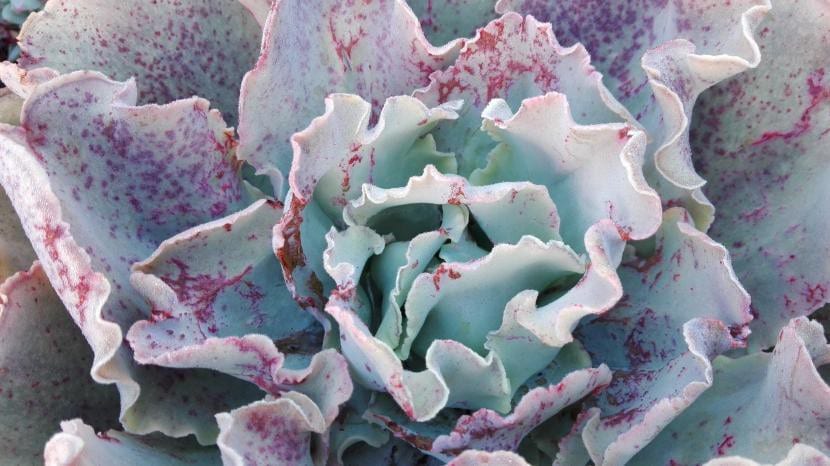
Echeveria 'Curly Locks'
Who has not fallen in love with a plant at some time? Okay, it's true, said like that, it seems that I'm a little crazy. Fall in love with a vegetable being? That's possible? Well, yes. It is. And to show you I am going to tell you about the echeveria, succulent or non-cactaceous succulent plants whose foliar beauty competes with that of the most beautiful flowers that you can find in a garden.
They are also very easy to grow succulents, ideal for decorating, creating compositions, keeping them indoors ... And, yes, they are suitable for beginners. Would you like to know them better?
Origin and characteristics of the Echeveria
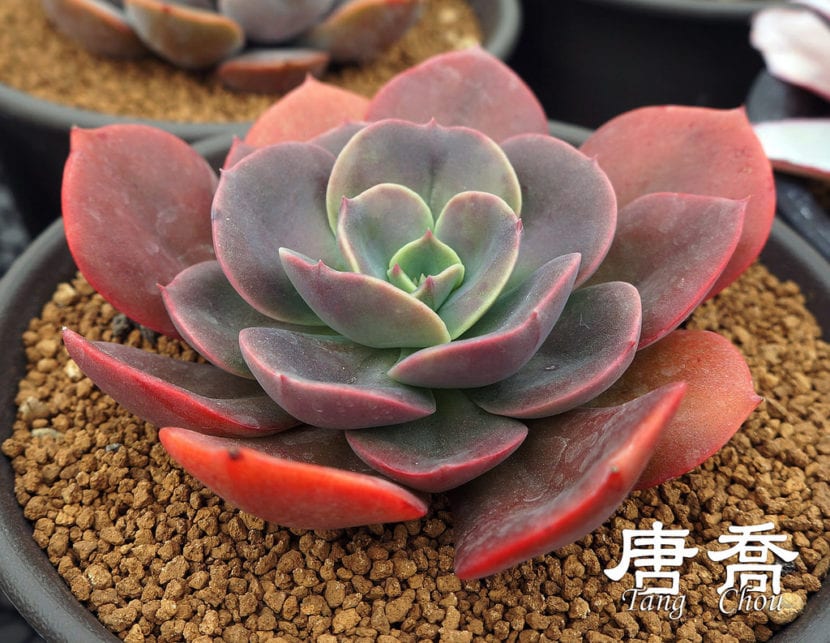
Echeveria 'Blue Metal'
The Echeveria are perennial herbaceous plants native to arid, semi-arid, and temperate zones of the southwestern United States, Mexico, Central America, and northern South America. They are generally acaules (that is, they do not have a stem or trunk), but there are some species that do rise a bit from the ground. The leaves are flattened and fleshy, and form rosettes. These are green, brown, reddish, metal ... everything will depend on the species and cultivar.
The flowers are grouped in spike-shaped inflorescences, and are self-sterile. This means that they cannot be fertilized by pollen from their own stamens or by that from any other flower of the same plant, nor from a sucker that has separated from it. Like the leaves, they are fleshy, and are made up of corollas that are tubular to conical with five pink, red, orange, yellow, white, or green petals.
Types or species
So that you can see that it is very worth enjoying having them at home, here is a gallery with photos of the most important species:
- echeveria lilac
- Echeveria cuspidata var. Zaragozae
- Echeveria elegans (Alabaster rose)
- echeveria glauca
- Echeveria pulvinata
- Echeveria runyonii 'Topsy Turvy'
What are their cares?
You are encouraging yourself to acquire one, right? Do not hesitate: get it. We tell you how to take care of it:
Location
Place your specimen in a very bright area. If you are going to be indoors, it is very important that it is near a window and that you rotate the pot daily so that the same amount of light reaches all its parts; on the other hand, if you are going to have it outside, I recommend placing it in a sunny location.
Soil or substrate
Not very demanding, but for it to grow exceptionally well it needs the soil or substrate to have good sewer system, that is, that it is able to quickly filter the water. As it is a rather small plant, if you are going to have it in the ground and it is not as good as it should be, you can bury a block (of those that are hollow inside), put a piece of shading mesh inside it and fill it with black peat mixed with perlite in equal parts.
Irrigation
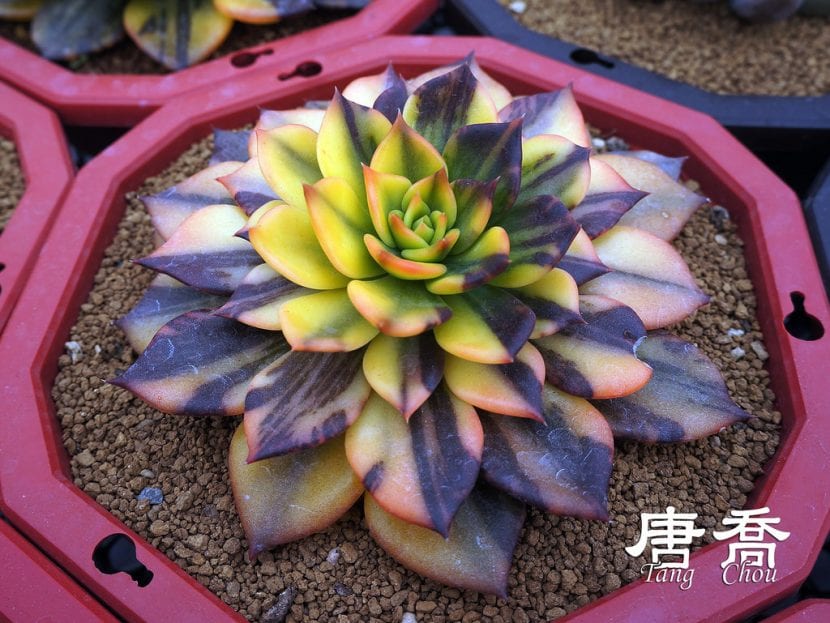
Echeveria cv Black Prince 'Variegata'
Irrigation has to be rather scarce. During the summer water your Echeveria once a week, a maximum of two, and the rest of the year every 10-15 days. Use rainwater or lime-free preferably. If you can't get it, you just have to fill a bucket with water and let it sit overnight. The next day, the heavy metals will have remained in the depth of the container, so you can use the water for watering.
Subscriber
During the warm months the plant it will need you to fertilize it with liquid fertilizers for cacti and succulents following the instructions specified on the package. You can also add a small spoonful or two of blue Nitrofoska every 15 days.
Planting or transplanting time
If you want to plant it in the garden you can do it in spring, when the risk of frost has passed. On the other hand, if you are going to have it in a pot, you have to move it to another one about 3cm wider when you buy it and again every two-three years.
Pests
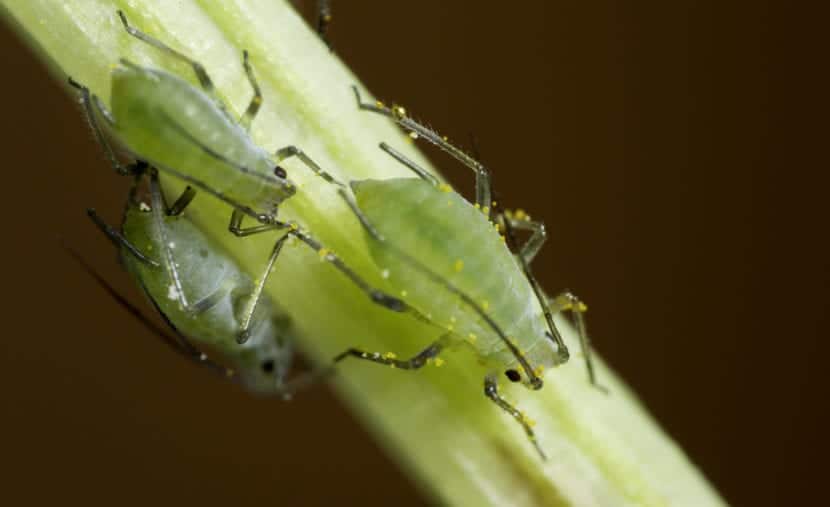
- Mealybugs: they can be cottony, have the shape of limpet, or be very small and feed on the roots. They can greatly weaken the plant, but fortunately they can be easily removed with a brush or cotton pad soaked in pharmacy rubbing alcohol.
- Aphids: they are very small parasites, about 0,5 cm long, that settle on the flower buds to feed on them. You can also remove them with a brush and pharmacy alcohol, since as they are fleshy they do not break as easily as conventional flowers. Of course, you also have to be very careful.
- Molluscs: keep them away from the Echeveria. Snails and slugs enjoy taking a bite out of these precious plants. You can protect your plant by wrapping it in mosquito netting, spreading molluscicide on the surface of the substrate (be careful if you have pets, as this product is toxic to them), diatomaceous earth, or other remedies such as beer. Here you have more ideas to repel them.
Management
When mushrooms are overwatered, mainly Phytophthora, can seriously harm her, to such an extent that its leaves and stems, if they have them, rot. If this happens, you have to remove the plant from the pot, remove as much substrate as possible, and wrap the roots in absorbent paper. The next day, it is planted again with substrate that has good drainage. After a week, the watering is resumed.
Multiplication
- Seeds: to get them you have to pass a small brush from one Echeveria to another flower from another specimen daily, until they dry. By doing so, you will be able to sow its seeds in a pot with a universal growing medium mixed with equal parts perlite. Always keep it slightly damp and close to a source of heat.
If everything goes well, they will germinate after about 5 days, but you have to know that it is difficult. - Leaf cuttings: in spring and summer you can take some leaves and lay them face up on a substrate like the one we discussed above. You just have to cover them with a little substrate, water, and put in semi-shade. After a few days they will emit their own roots.
- Young: at the beginning of summer you can separate the suckers with previously disinfected scissors. Cut the stem as close as you can to the trunk of the mother plant. Then, you just have to plant it in a pot and treat it like a new plant, since it will not take more than 15-20 days to root.
Rusticity
Most species they support mild and occasional frosts of up to -4ºC, but it is important that they protect themselves from hail and snow.
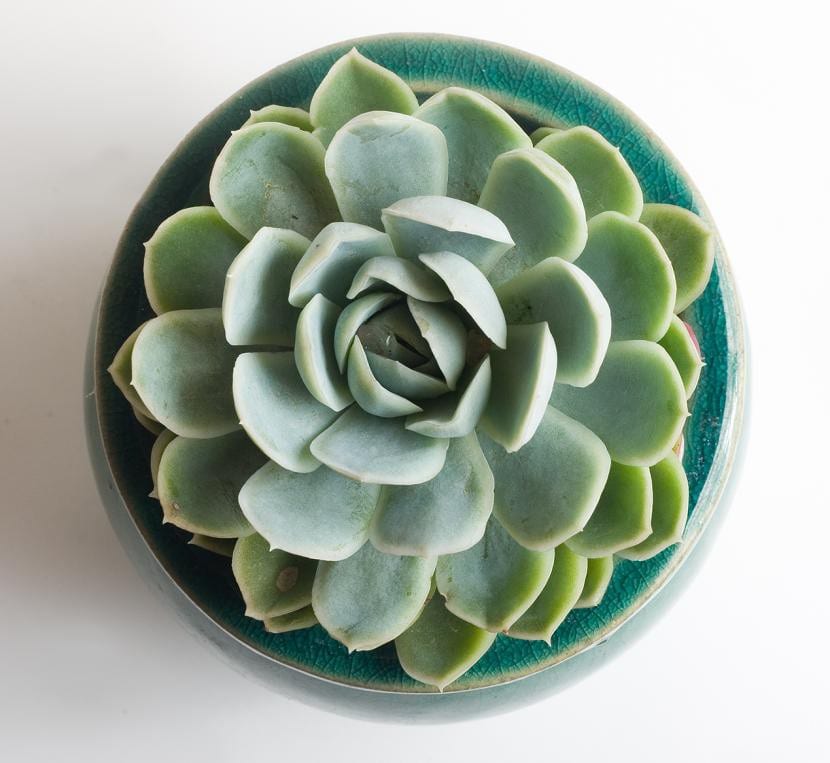
Echeveria derenbergensis
Have you fallen in love with the Echeveria? 😉
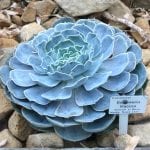
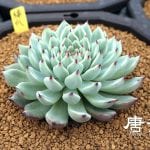
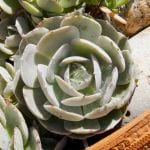
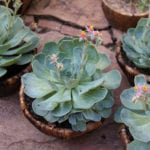
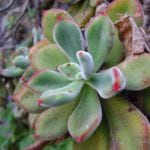
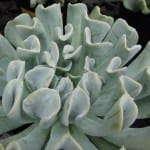
Hi there:
I am a little doubtful about this plant once ... just acquired this plant, do we have to transplant it to a larger pot or the following 2 years?
Thanks greetings.
Hello Eduardo.
It will depend on whether at this time you have already occupied the entire pot, something that is usually the most common. You can check it if you try to remove it a little from the container, and if when doing so the earth bread comes out whole, without falling apart. If so, it will be advisable to plant it in one that is larger.
Regards!